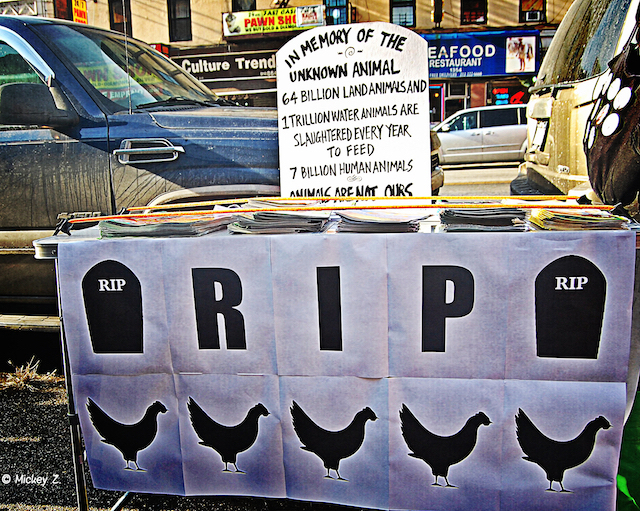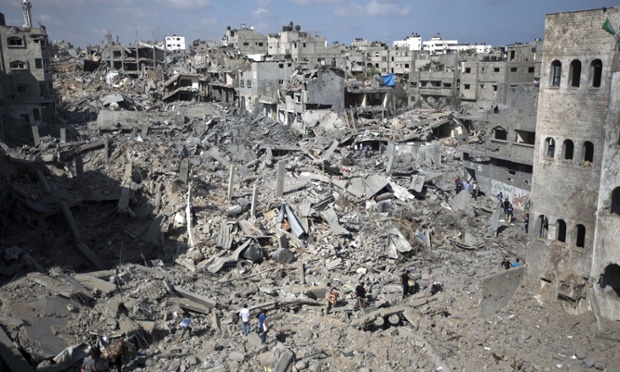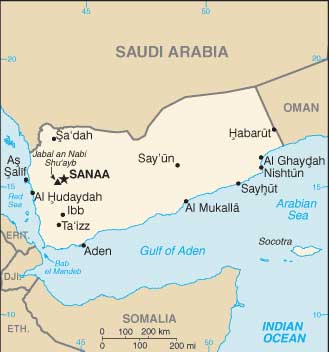Niles Williamson
Yet another front has been opened in the US-led war drive in the Middle East, this time in Yemen. In flagrant violation of international law, Saudi Arabia, backed by the Obama administration, has now completed its third day of air strikes targeting strategic locations as well as residential neighborhoods in Yemen.
At least 39 civilians have been killed, including at least six children. The death toll will no doubt rise sharply in the coming days. These actions are being carried out with US logistical support, utilizing fighter jets and bombs provided by the United States.
The assault from the air has been accompanied by threats of an imminent ground war spearheaded by Saudi Arabia and Egypt. Saudi Arabia has mobilized approximately 150,000 soldiers, massing troops and heavy artillery on its border with Yemen. US-backed Egyptian dictator Abdel Fattah el-Sisi has indicated that his government, which has already positioned war ships in the Red Sea, is prepared to dispatch troops to Yemen to take part in the assault.
The US-sponsored war has as its aim the defeat of Houthi rebels backed by Iran and forces loyal to former longtime dictator Ali Abdullah Saleh that have taken control of much of Yemen’s western provinces. Washington hopes to reinstate its beleaguered stooge, President Abd Rabbuh Mansur Hadi, who fled the country this week in the face of a Houthi assault on his compound in the southern city of Aden.
The US also wants to reclaim the Al Anad airbase, which has been used to launch drone strikes within Yemen that have killed more than 1,000 people since 2009. The air base was seized by Houthi rebels on Wednesday morning, shortly before Saudi Arabia launched its air war.
The eruption of war in Yemen is the culmination of years of intense intervention by American imperialism. The government of Hadi, which replaced the US-backed Saleh regime in 2012, is broadly despised for its collaboration with US drone strikes. As the stooge government disintegrated, the country was engulfed by sectarian conflict pitting different militias and proxy forces against each other.
The sectarian fighting in Yemen now has the potential to explode into a conflict involving the entire Middle East, Central Asia and North Africa. Among the countries that have provided support for Saudi Arabia against the Houthis are Morocco, Sudan, Jordan, Bahrain, Kuwait, the United Arab Emirates and Qatar. On the other side stand the governments of Iraq and Syria, which have sided with Iran in opposing military operations.
The developments in Yemen have once again exploded the pretext put forward by the United States government that its foreign policy is based on the promotion of democracy and human rights and the fight against terrorism. The US is backing a war spearheaded by a monarchy in Saudi Arabia that beheads its own subjects and provides financial support to Al Qaeda and other Sunni extremists, along with the blood-soaked military dictatorship in Egypt that issues mass death sentences and shoots down workers in the street.
What accounts for the American government’s interest in controlling Yemen? In one word: oil.
The Bab el-Mandeb strait, which, along with Egypt’s Suez Canal, connects the Mediterranean to the Indian Ocean, is located between Yemen on the Arabian Peninsula and Djibouti and Eritrea on the Horn of Africa. Much of the oil exported from the Persian Gulf to Europe, the United States and Asia must pass through the narrow strait, making it a key chokepoint for global trade.
Anthony Cordesman, the influential foreign policy strategist at the Washington DC Center for Strategic and International Studies think tank, laid out the strategic calculations of the American ruling class. Noting that 3.8 million barrels of oil and petroleum products flowed through the Bab el-Mandeb strait in 2013, Cordesman recently wrote that the interests at stake included “the cost and security of every cargo that goes through the Suez canal, the security of US and other allied combat ships moving through the canal, the economic stability of Egypt, and the security of Saudi Arabia’s key port at Jeddah and major petroleum export facility outside the Gulf.”
In other words, the war is for geo-strategic advantage and world power.
Cordesman added that while the US “has already said it would give logistical and intelligence support…the situation in Yemen may well come to require more than that, and some kind of US combat support”—i.e., direct US military action.
The American people are being dragged into another criminal operation with incalculable consequences, planned and implemented behind their backs without even the pretense of public debate, let alone consultation.
Yemen is the latest in a string of military interventions by American imperialism that have wreaked havoc on the Middle East and Central Asia. Fifteen years after the launching of the “war on terror,” chaos and destruction plague the entire region.
The invasion of Afghanistan in 2001 was followed by the invasion and occupation of Iraq in 2003, which resulted in the death of more than a million people and the destruction of an entire society. Iraq was followed in 2011 by the bombing of Libya and the overthrow and murder of President Muammar Gaddafi, which has resulted in the descent of that country into sectarian civil war.
Since 2011, the US has stoked a civil war in Syria with the intention of overthrowing President Bashar al-Assad. In the course of this regime-change operation, the CIA gave support to Al Qaeda-linked militants and other radical Islamists, some of whom went on to form the Islamic State of Iraq and Syria. The civil war has so far resulted in the death of more than 200,000 people and displacement of millions more.
The United States is now in the midst of a new war in Iraq and Syria against ISIS, in which it finds itself in a de facto alliance with Iran, dropping bombs in support of Shiite militias fighting in Tikrit.
Beyond the Middle East, Ukraine is in a state of semi-disintegration as a result of American intervention through the promotion of a fascist-spearheaded coup and installation of an anti-Russian ultra right-wing government. American policies have triggered a massive militarization of Eastern Europe, posing the threat of a nuclear war with Russia. At the same time, the US is pursuing a policy of encircling China through the network of military alliances and provocations that make up the “pivot to Asia.”
The US recklessly and shortsightedly careens from one disastrous adventure to the next. Every catastrophic intervention becomes the justification for the next war. The one consistent principle is the determination of the American ruling class to assert its interests and impose its domination in every corner of the globe.
This policy of ever-expanding war and foreign intervention is tied to the delusional conception of global hegemony that has guided American foreign policy since the dissolution of the Soviet Union. Over the last quarter century, US imperialism has sought to offset its declining world economic position by using its military superiority to bully or destroy regimes it deemed hostile to its global ambitions, while intimidating its imperialist “allies.”
In its mad drive for global domination, the American corporate and financial aristocracy is pushing the world towards a third world war that threatens humanity with a nuclear holocaust. The only force that can stop the hand of American imperialism and halt the drive to war is the international working class, organized on a revolutionary socialist program.







